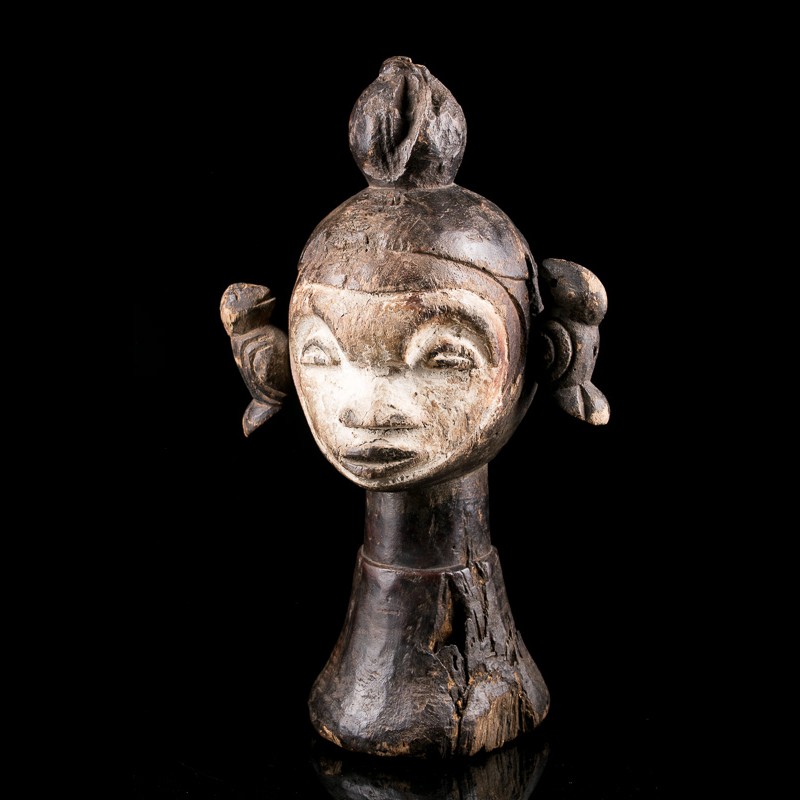

































In the south of the Idoma country, not far from the border with Cameroon, there are crests such as the one I am suggesting to you. They sometimes have several heads or faces juxtaposed or superimposed.
They bear the name of ungulali. Ungulali means "the flute" because of the sound of the flute which announces the arrival of the masked dancers.
The presence of birds as seen on the copy that I am offering here is also attested. The symbolism attached to these birds remains, according to F. Neyt and A. Désirant, difficult to interpret.
According to W. Fagg, it would be youngsters or other small birds whose presence at the top of the mask would recall the time of the harvest during which the birds peck the ripe fruits.
Thompson also reveals the presence of birds on Yoruba crowns. They evoke the forces of evil and how to ward off them.
Birds oppose evil spirits. We find them in the sculptures Igbo, Idoma-Iyala, Ibibio, Ejagham and Eket.
Birds could be symbols associated with life and fertility but also with sacrifice and death.
Among the Idoma, the ungulali masks danced at the funerals of the notables and during the entertainment. The birds looking towards the center of the composition seem to protect the bearer of the crest.
There are several types of traditional masks and crests in the Idoma artistic corpus. Among these is the oglinye crest of justice, as seen in the context photo.
The Idoma settled around 1800 at the confluence of the Benue and Niger rivers, coming simultaneously from the east and the west;
During the 19th century, they had to emigrate again under pressure from the Fulani coming from the north.
Of the Kwa language, these different groups each had a totemic animal whose presence makes it possible to follow their migration, but they do not have a common historical origin.
Cf. The arts of Benue - at the roots of traditions, F. NEYT, A. DESIRANT, 1985
See attached photo of the copy from the A. Dufour collection which is similar.
Data sheet
You might also like